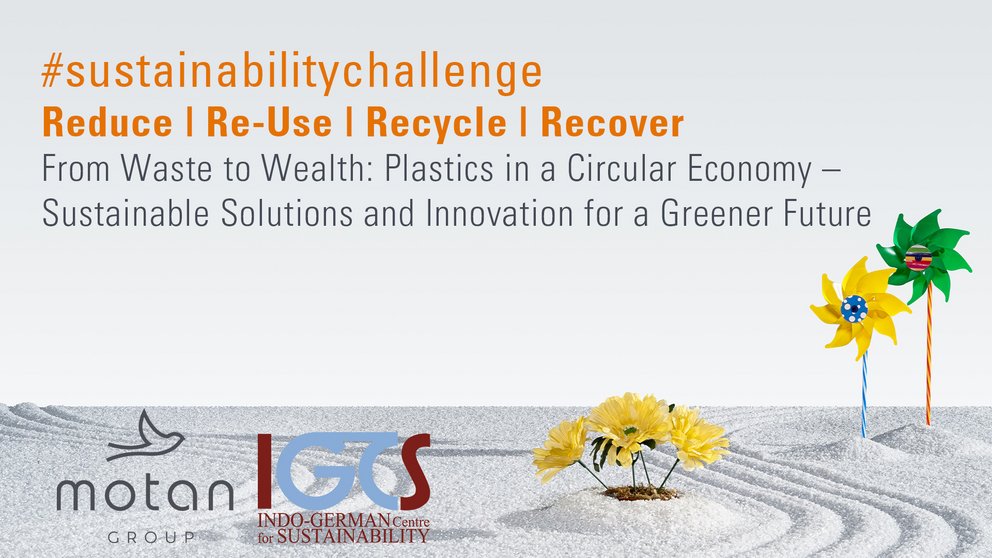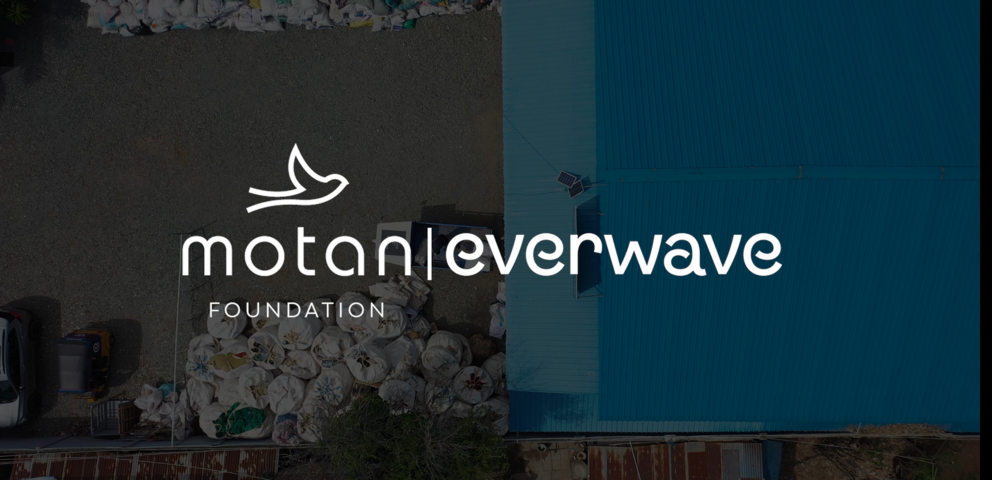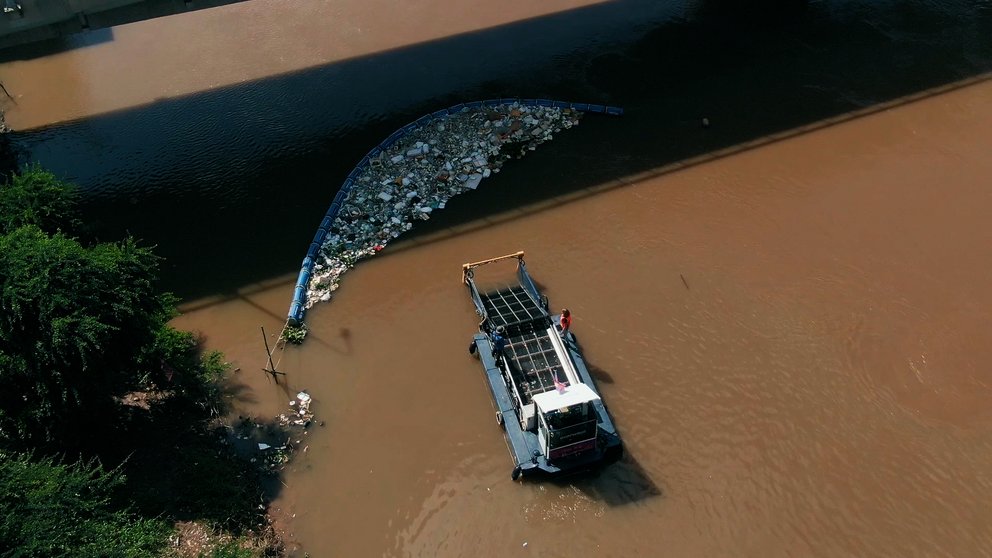Sustainable PET preforms
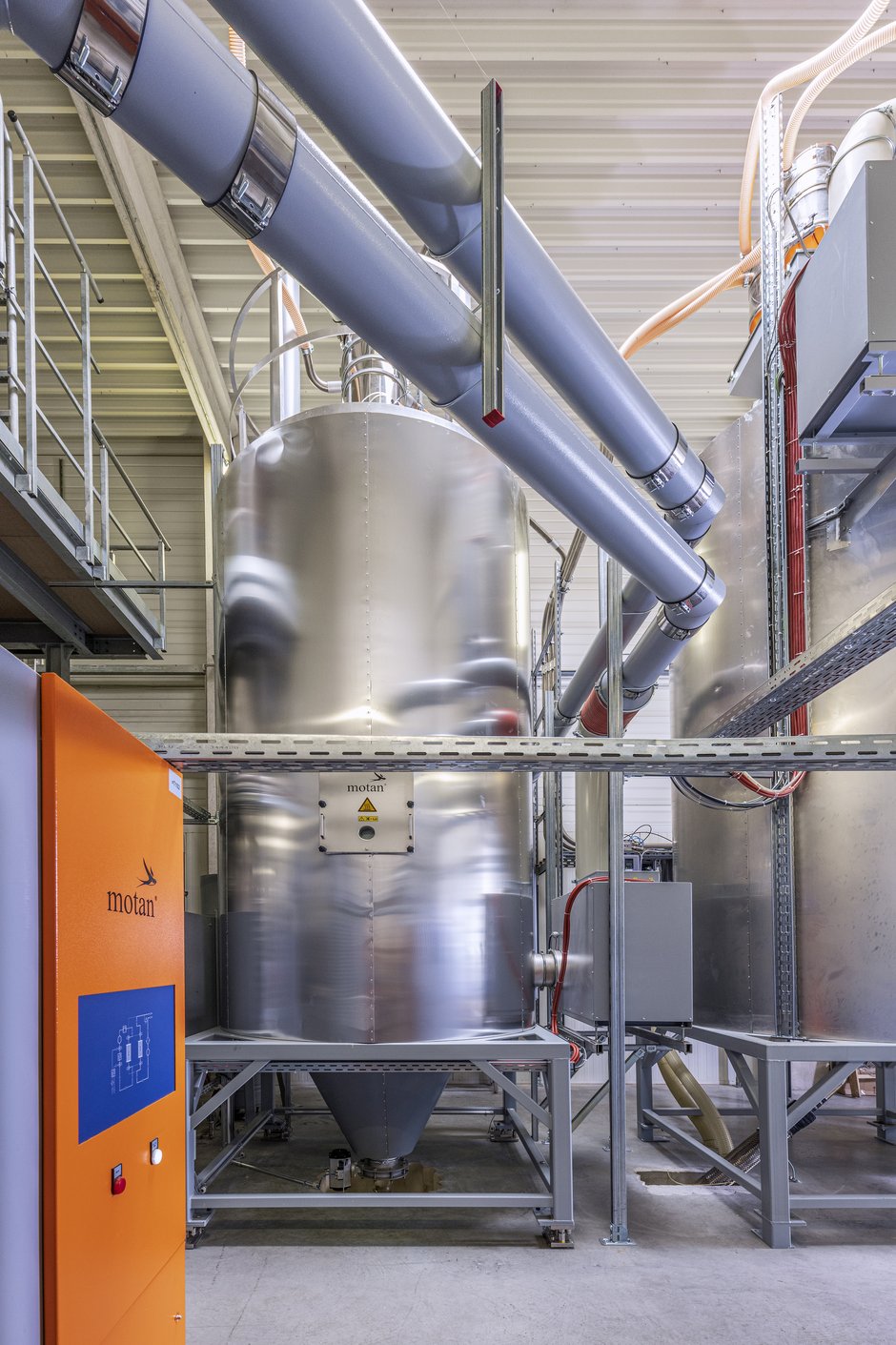
Recycling and resource scarcity
The preforms are made at the group’s plants located in Bruchsal and Kloster Lehnin. The material throughputs are huge: with the preform injection molding systems it can range between 830 and 1300 kg/h depending on the system in question. The challenges in terms of process engineering lie mainly in the conditioning of the recycled material – called bottle flakes – for the injection molding process. These not only need to be suitable for foodstuffs, but also cost-efficient to buy and condition. For many years now, Hansa-Heemann has worked in the circular economy and purchased recyclate directly from partners in the food retailing industry, so ensuring clean homogenous recycled material. Due to the increasing demand, however, this strategy is starting to reach its limits, high-quality recycled material is now a desired and scarce resource and comes at a price.
New challenges
The most recent challenge Hansa-Heemann must confront is the trend of PET bottle walls becoming thinner and thinner. Thinner bottle walls result in a more economical bottle while being used, but makes the recycling process much more difficult as the mechanical properties of the bottle flakes can frequently change. Specifically, this means that the conditioning of the material before the injection molding process is much more difficult. This is why Hansa-Heemann decided to initiate a joint development project with motan-colortronic for a pilot system. The resulting system design was then implemented and tested for one processing machine on site at the plant in Kloster Lehnin. The desired process capabilities of the system have since proven themselves and have convinced both parties that they now have a viable solution.
Before this project, both companies had worked together for many years in the area of material conditioning and processing. The companies first met during the K 2007. Therefore it made sense for the two to work together on the project for bottle flakes. “Previously we have had very good experiences with motan-colortronic systems. For the current bottle flakes it was clear from the onset that we would be entering new territory with them,” says Ralph Möller, head of preform manufacturing at Hanse-Heemann.
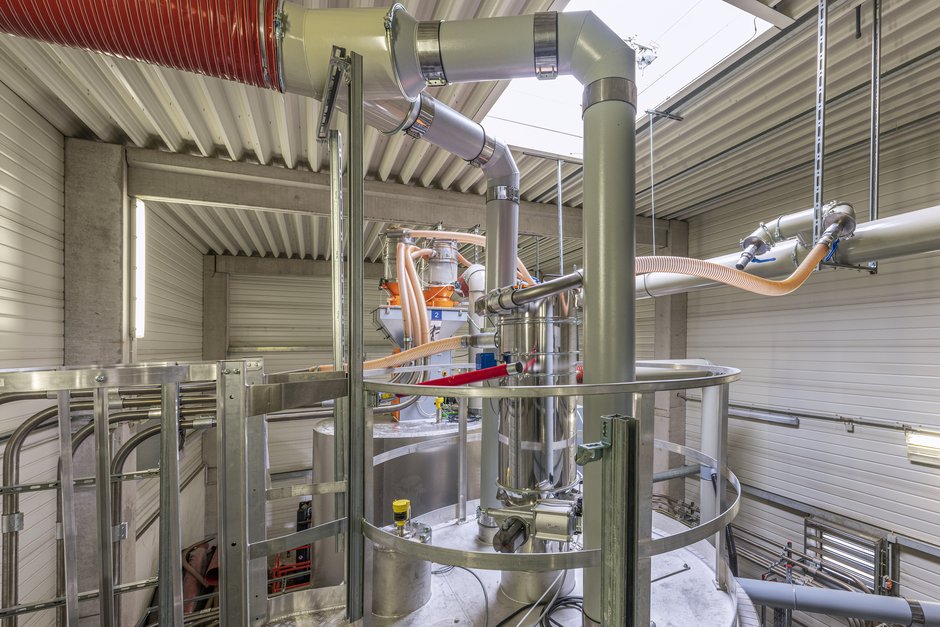
Looking at the facts
Ralph Möller already started noticing in 2017 that the current bottle flakes were resulting in flawed preforms. A closer look at the engineering of the systems didn’t throw up any errors, so the material was inspected more closely. This is when Ralph Möller and his team quickly realized that the bottle flakes from so-called “light-weight bottles” are much lighter than they have been in precious years. They are a lot more compact which was resulting in problems with the material flow during storage and conveying, but also the throughput through the drying bin was not suitable for the system engineering. New concepts for material conditioning, particularly for drying and conveying, were essential.
Assessing the basic strategy
Hansa-Heemann have had great success in the past with bottle flakes. They make it possible to use larger proportions of recycled material for preforms and at the same time maintain essential properties for the blowing and filling process as well as the barrier properties of the finished product. This fits with the corporate strategy and ensures their economic success.
“The basic strategy wasn’t the problem, and will continue to be part of the solution,” says Ralph Möller. The development project with motan-colortronic had a simple, clear goal: Which strategy makes it possible to reliably process the lighter bottle flakes into PET preforms using at least 25% flakes?
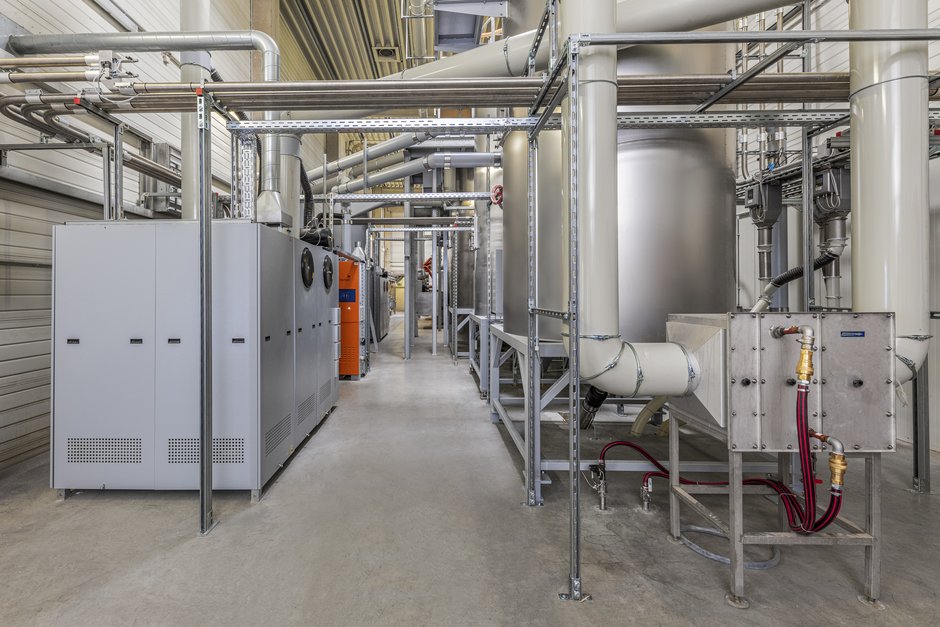
Forging new paths
Preliminary assessments by motan-colortronic showed that the bottle flakes used are sufficiently crystallized, so that crystallization is not necessary. The key factors were the changed mechanical properties of the bottle flake, such as its bulk density and the impact this had on how the material could be stored and conveyed.
motan-colotronic’s application department therefore constructed a new design of drying bin. The modified geometry optimizes the air flow for the material. Tests were then conducted in Isny – these were successful from the start. The result is improved air flow through the lighter flakes, which drastically increases the drying performance and is also far gentler for the material. The bottle flakes are now dried much more evenly and consistently. The special geometry of the drying bin also prevents any bridge-building of the material.

Redesign the existing plant
After a successful solution for the drying process had been found, the experts from motan-colortronic redesigned the entire existing plant for the new recycled material. A discharge station for the bottle flakes, which are delivered in big bags, has been added to the storage logistics at the Kloster Lehnin plant. For the pneumatic conveying, the material is feed from bins and suction boxes that are suited to the material. The plant already has a motan-colortronic permanent central vacuum system with sufficient capacity and the material can be distributed via a coupling station, so additional systems can be integrated at a later time.
Material feed-lines and material loaders on the drying bins are now also designed for the specific properties of bottle flakes. Here, the new METRO G/F material loaders specially designed for large throughputs and flakes were used, these are equipped with an extra-large discharge flap. Because the geometry of the drying bin ensures a consistent flow of the material out of the hopper and prevents bridge-building, mechanical agitators and mixers are not required. The hopper is installed on a mezzanine above the processing machine and is connected to it via a drop hose. A volumetric dosing & mixing unit is also installed directly at the material intake of the processing machine – this was also the case for previous systems – where the virgin and regrind material flows are brought together.
Successful tests
The first tests on site using the described pilot system went well. The goal for the future is to slowly switch over all systems to the new concept. “This could give us new impulses for a more economic, sustainable and intensive circular economy so that we can maintain our competitiveness,” hopes Ralph Möller.
RAL quality mark for PET recycling of beverage packaging
Sustainable products and production methods have long been part of Hansa-Heemann’s corporate philosophy. The company was awarded the RAL quality mark in 2014 as one of four pioneering companies for sustainable PET beverage packaging. The RAL quality mark is awarded by the Gütegemeinschaft Wertstoffkette PET-Getränkeverpackungen e.V., located in Bad Homburg (https://www.wertstoff-pet.de/).
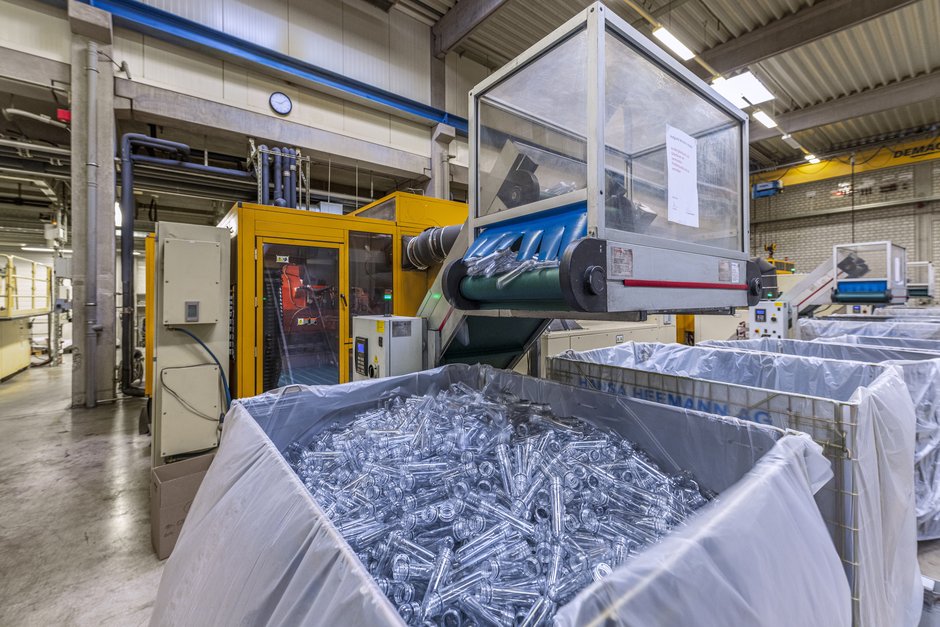
About Hansa-Heemann AG
For four decades, the HANSA-HEEMANN AG has been one of the leading suppliers of mineral water and soft drinks in Germany. Some of the labels belonging to the company are, among others, Hella, Fürst Bismarck Quelle and St. Michaelis. Along with their main office in Rellingen near Hamburg, Hansa-Heemaann also have production sites in Aumühle, Trappenkamp, Kloster Lehnin, Löhne and Bruchsal. At these sites, approx. 2 billion liters were produced and distributed in 2018. Their annual turnover for mineral water, juice drinks, lemonades, sport and energy drinks is approxmately 300 million Euro. The company employs approximately 850 employees and is currently the second largest mineral water producer in Germany.

